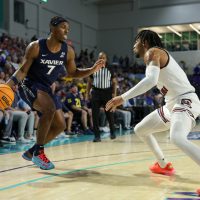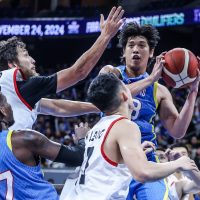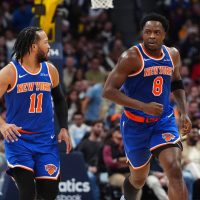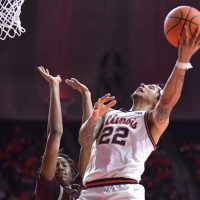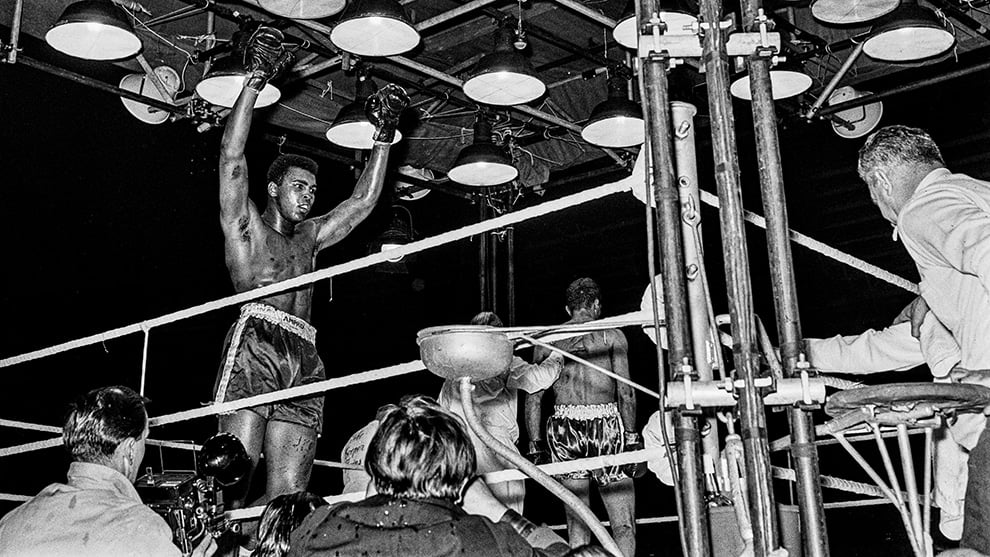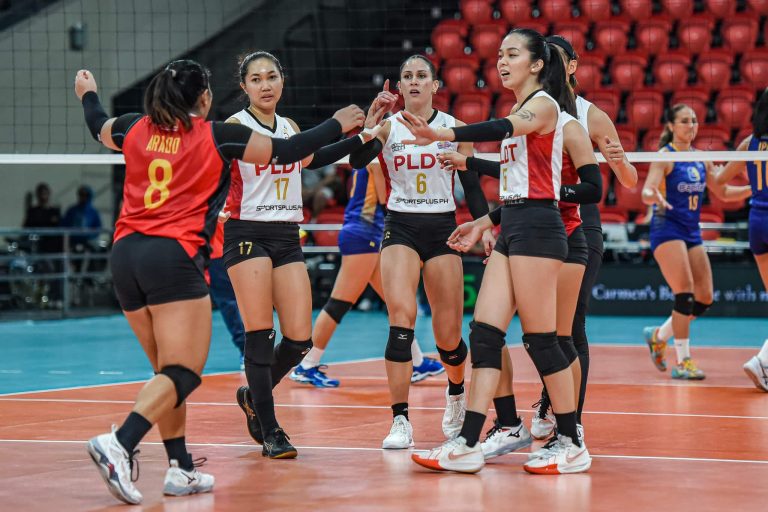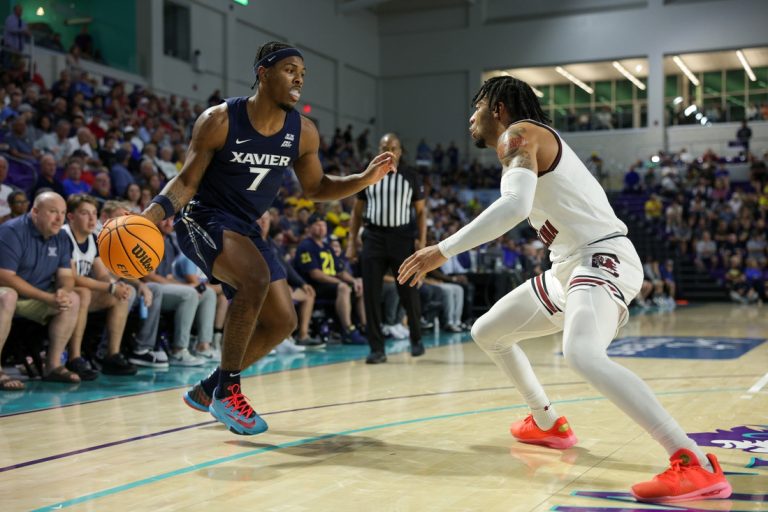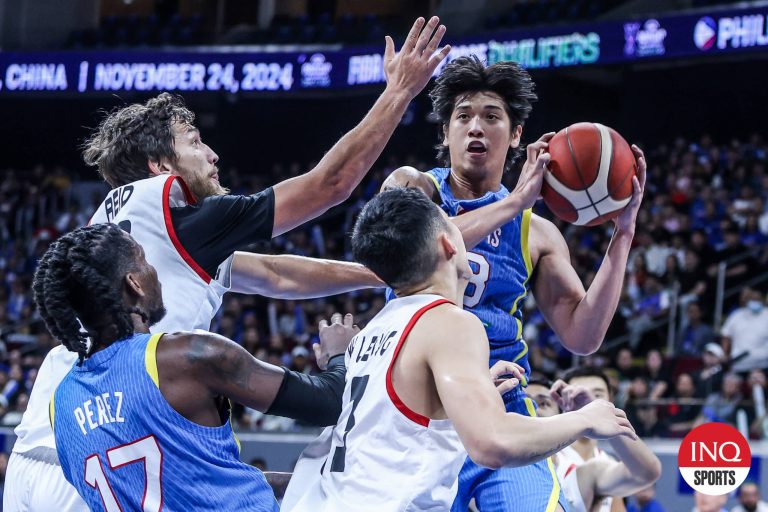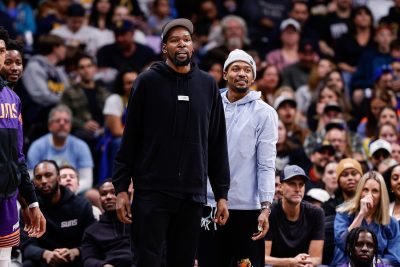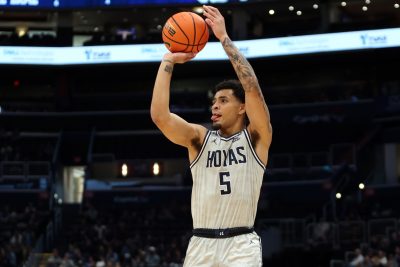By Steve Bunce
Last week I held an iconic boxing glove in my hands.
It was a relic from time, part of boxing’s rich history, a glove of infamy and it seemed to me that it was impossibly light for an object so heavy. Light and slight in my hands. It is dry now, old and one of the most beautiful objects in our business.
The glove was once worn on his left hand by Cassius Clay in his fight with Henry Cooper at Wembley Stadium in 1963. Yes, the glove with the tear on the seam, the glove that has become part of our folklore. There are so many stories that it is hard to get two glove tales together.

An exhibition assistant poses for a photograph whilst looking at a pair of split boxing gloves work by Muhammad Ali during this 1963 fight against Henry Cooper, during a photocall to preview the Muhammad Ali exhibition entitled “I Am The Greatest”, at the O2 Arena in London on March 3, 2016.
The exhibition at London’s 02 Arena traces the story of the boxer from his childhood, through his glittering and brutal career to his elevation as a cultural and political icon. / AFP / JUSTIN TALLIS (Photo credit should read JUSTIN TALLIS/AFP via Getty Images)
Everyone in boxing has, it seems, seen the picture of Clay dumped on his backside at the end of the fourth round; in the black and white picture, the tear is clearly visible on the seam, the padding protruding, Clay’s eyes wide open and his future frozen at that moment.
The bell sounds and a few seconds later, in Clay’s corner, Angelo Dundee, goes to work. Dundee had spotted a slight tear at the end of the first round; at the end of the fourth, as Clay sat down still stunned, Dundee works the tear open and starts hollering about the split glove. He wants to find some time to get his man through the next round. At the centre of the storm was the glove, the same glove I held last week. As I said, so tiny and so huge at the same time.
“Cassius looked like he was out of it,” Dundee always said. There was pandemonium in Wembley and at ringside. Dundee gets out the smelling salts and gives Clay a jolt, then he soaks him and then he slaps him. It is a pivotal moment in the life and times of Muhammad Ali – he has to win.
And then Dundee works his magic to help save his guy. And that is when the different tales begin – it all started with Dundee sticking a finger or two inside that glove. He needed some extra time to help his boxer and there are a lot of versions of the “time” he needed. We love tall tales in boxing and the split-glove timeline has been stretched to incredibility over the years.
“I saw a small split along the seam of the boxing glove,” Dundee said. “I stuck my finger in the split, helping it along. It was now a bigger split.”
The referee, Tommy Little, and the British Boxing Board of Control’s Teddy Waltham both examined the glove. Dundee is building time, demanding new gloves. The glove was never changed, that is part of a fantasy story where Clay gets five minutes to recover: Never happened.
“I have examined the glove, and I am satisfied it was a natural split down the seam,” said Waltham, a quote that appeared in newspapers the following day. And it is an important quote, not to be dismissed.
Dundee, meanwhile, is fighting for time in the corner. “Sure, I wanted a new pair of gloves, but hopefully not too quickly.” New gloves were found, ready if they needed to be replaced at the end of the fifth round. The drama in that ring from the moment Cooper’s left hook landed at the end of the fourth, and until the bell sounds to start round five, is unbearable.
In the fifth, as the action starts, it is obvious that Clay’s head has cleared. There is one picture which shows the smooth and clear knuckle part of the left glove and on the edge, down the seam, the split is visible. Seconds later, Cooper is slashed and cut and there is blood everywhere. Little must step in; Clay has survived and won, and the story of the glove is launched on a bloody night.
Copper is saved after 2:25 of the fifth round, his face smeared, but his resistance remains. The blood covering his face and torso and the left hook from the fourth are fast becoming a distant, desperate moment in his boxing life. “I have no regrets,” Cooper would repeat until his death. He loved Ali, they loved each other, but he was so close to glory that night. I never believed him once when he said that he had ‘no regrets’. The glove is a reminder of all those regrets he never had.
It is also the glove that was at the centre of the Ali Exhibition; in a glass case in the opening night at the O2 in London, the Bellagio in Las Vegas and the Beverley Centre in Los Angeles. A million eyeballs studied that tiny glove, once red and glorious. There are more tours planned and the glove I held last week will be back at the heart of the exhibition; it remains a brilliant reminder of the man and a direct physical link to him.
Now all that we have to do is find the boots that Julius Francis wore when he met Mike Tyson in Manchester in 2000. “I think [Kellie] Maloney gave them to a charity,” Francis told me recently.
They should be easy to trace – white boots, splattered with blood, size 14 and with a Daily Mirror logo on the sole. No confusion there; same as Clay’s glove really – the tear on the seam burns as bright as any newspaper logo and it is hard to get away from all the facts.
And finally, how long did Dundee buy his fighter? Who cares, it’s a great story, one of our rituals. Cooper talks of minutes, others of under a minute and some, like me, believe it was seconds.
#famous #boxing #glove #history

